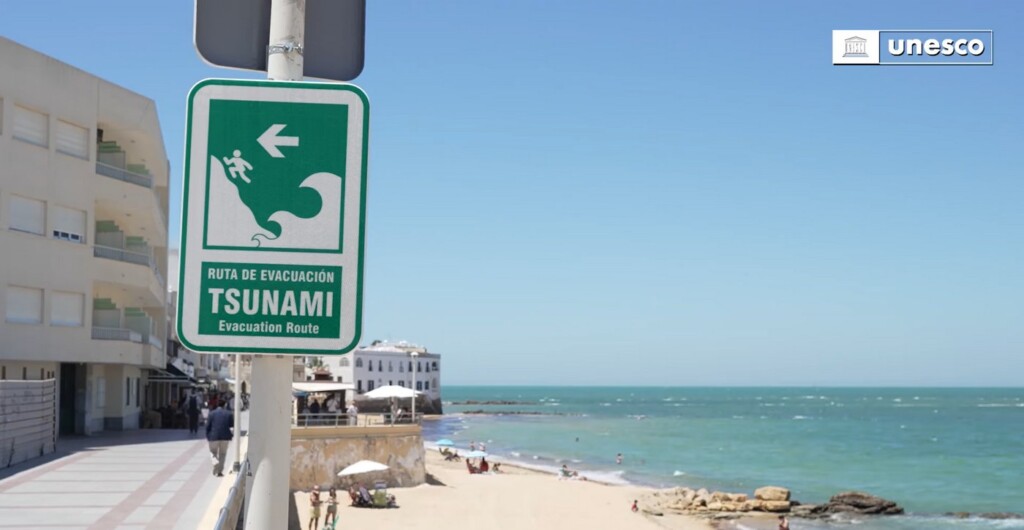
Following the powerful earthquake originating off the coast of Russia, a UN organization’s early warning systems triggered a tsunami alert within just 10 minutes.
Thanks to this global monitoring system, which has been deployed for more than 20 years, millions of people were warned ahead of the coming danger, and if a tsunami had been on its way, they’d have been given precious time to evacuate.
The United Nations Educational, Scientific, and Cultural Organization (UNESCO) is mostly known for promoting heritage tourism through its famous ‘World Heritage Site’ designations.
But on the night of July 29th-30th, an 8.8-magnitude undersea earthquake struck off the coast of the Kamchatka Peninsula in Russia. This exceptionally powerful earthquake was the strongest recorded since the Tōhoku earthquake in Japan in 2011, and one of the ten strongest since 1900.
Just 10 minutes after the earthquake, the Pacific Tsunami Warning System, coordinated by UNESCO, issued an initial warning covering the areas most at risk, particularly the Russian and Japanese coasts. This warning was then relayed by national centers and enabled the immediate implementation of evacuation plans in several countries.
Within 20 minutes of the earthquake, this system provided detailed forecasts of expected flood heights, and the alert was then extended to other countries bordering the Pacific Ocean. Many of these countries, including China, Indonesia, Mexico, the Philippines, Peru, the United States and New Zealand, then issued national alerts or carried out preventive evacuations.
“This timely alert once again demonstrates the crucial role of international scientific cooperation in the face of natural hazards. UNESCO oversees the global tsunami warning system, puts ocean science to work to protect millions of lives, and helps communities prepare for this risk,” said Audrey Azoulay, Director-General of UNESCO.
It’s proof that the ‘S’ in UNESCO is just as important, if not more so, than any other letter in its beloved acronym.
Established after the 2004 Indian Ocean tsunami which claimed more than 220,000 lives, the global tsunami warning system coordinated by UNESCO relies on a dense network of sensors, tide gauges, and regional warning centers. This system is based on an alert chain combining scientific expertise, international coordination, and the rapid response capacity of local authorities.
First, seismographs in place for earthquake detection and preparedness relay information on the severity of the quake to regional warning stations, wherein scientists and operators plot the course of a hypothetical tsunami from the quake’s epicenter, and leverage the readings of 1,400 sea level monitors contributed by UNESCO member states. Little more than buoys, these measure changes in the water level that indicate a large wave may have passed by.
THE SAME BUT FOR VOLCANOES: Trees Can Warn Us When Volcanos Are Ready to Erupt–and NASA Satellites Can Read Their Signals
“That information can tell you when, where, and how big the tsunami will be” said UNESCO’s Head of Tsunami Resilience Section, Bernardo Aliaga.
20 years ago, Aliaga said that it might take hours to generate and gather this amount of data, which is now all done in 10 minutes. This system now covers the Pacific, Indian, Caribbean, Northeast Atlantic, and Mediterranean ocean basins.
Beyond alerting communities when tsunamis occur, UNESCO is working to strengthen the resilience of coastal populations through several key initiatives. UNESCO’s Tsunami Ready program, implemented in 43 countries, trains coastal communities in tsunami risk prevention through evacuation plans, information campaigns, and local warning systems. Full-scale evacuation drills are regularly organized to test the effectiveness of warning systems and raise awareness among populations.
UNESCO’s VARIED WORK: UNESCO Honors ‘World Treasures’ of Culture–Unique Ways Countries Brew, Build, Bake and Boogie
In response to the potential damage caused by the tsunami, Director-General Azoulay has pledged UNESCO’s support to coastal communities, particularly in preserving and restoring their natural and cultural heritage.
UNESCO also actively supports scientific research in this field to better understand how tsunamis occur, move and impact coastal areas.
SHARE This Great Uplifting Response To The Earthquake With Your Friends…
